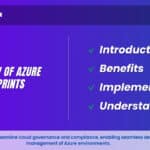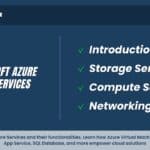[et_pb_section fb_built=”1″ _builder_version=”4.20.2″ _module_preset=”default” custom_padding=”||54px|||” da_disable_devices=”off|off|off” global_colors_info=”{}” da_is_popup=”off” da_exit_intent=”off” da_has_close=”on” da_alt_close=”off” da_dark_close=”off” da_not_modal=”on” da_is_singular=”off” da_with_loader=”off” da_has_shadow=”on”][et_pb_row _builder_version=”4.20.2″ _module_preset=”default” global_colors_info=”{}”][et_pb_column type=”4_4″ _builder_version=”4.20.2″ _module_preset=”default” global_colors_info=”{}”][et_pb_text _builder_version=”4.20.2″ _module_preset=”default” global_colors_info=”{}”]
Create a virtual machine in Azure Step-by-Step
[/et_pb_text][/et_pb_column][/et_pb_row][/et_pb_section][et_pb_section fb_built=”1″ _builder_version=”4.20.2″ _module_preset=”default” custom_padding=”2px||0px|||” da_disable_devices=”off|off|off” global_colors_info=”{}” da_is_popup=”off” da_exit_intent=”off” da_has_close=”on” da_alt_close=”off” da_dark_close=”off” da_not_modal=”on” da_is_singular=”off” da_with_loader=”off” da_has_shadow=”on”][et_pb_row _builder_version=”4.20.2″ _module_preset=”default” custom_padding=”||0px|||” global_colors_info=”{}”][et_pb_column type=”4_4″ _builder_version=”4.20.2″ _module_preset=”default” global_colors_info=”{}”][et_pb_text _builder_version=”4.21.0″ _module_preset=”default” min_height=”119.8px” global_colors_info=”{}”]
Creating Azure Virtual Machines like a Pro
Here are the step-by-step lab guides for creating a virtual machine in the Azure portal 1. log in to Azure portal https://portal.azure.com
[/et_pb_text][et_pb_text _builder_version=”4.20.2″ _module_preset=”default” background_image=”https://kloudcourse.in/wp-content/uploads/2023/03/1-1.png” min_height=”469px” custom_margin=”-91px|||||” custom_padding=”85px||91px|||” global_colors_info=”{}”][/et_pb_text][et_pb_text _builder_version=”4.20.2″ _module_preset=”default” min_height=”32.8px” global_colors_info=”{}”]
2. Navigate to Home tab in Azure portal
[/et_pb_text][et_pb_text _builder_version=”4.20.2″ _module_preset=”default” background_image=”https://kloudcourse.in/wp-content/uploads/2023/03/2-1.png” min_height=”409.8px” global_colors_info=”{}”][/et_pb_text][et_pb_text _builder_version=”4.20.2″ _module_preset=”default” min_height=”32.8px” global_colors_info=”{}”]
3. Click on Create a New Virtual Machine
[/et_pb_text][et_pb_text _builder_version=”4.20.2″ _module_preset=”default” background_image=”https://kloudcourse.in/wp-content/uploads/2023/03/3-1.png” min_height=”426.8px” custom_margin=”-17px|||||” global_colors_info=”{}”][/et_pb_text][et_pb_text _builder_version=”4.20.2″ _module_preset=”default” min_height=”30.8px” global_colors_info=”{}”]
4. Or In Global search Type Virtual Machine
[/et_pb_text][et_pb_text _builder_version=”4.20.2″ _module_preset=”default” background_image=”https://kloudcourse.in/wp-content/uploads/2023/03/4-1.png” min_height=”357.8px” custom_margin=”-17px|||||” global_colors_info=”{}”][/et_pb_text][et_pb_text _builder_version=”4.20.2″ _module_preset=”default” min_height=”30.8px” global_colors_info=”{}”]
5. Click On Create
[/et_pb_text][et_pb_text _builder_version=”4.20.2″ _module_preset=”default” background_image=”https://kloudcourse.in/wp-content/uploads/2023/03/5-1.png” min_height=”448.8px” custom_margin=”-17px|||||” global_colors_info=”{}”][/et_pb_text][et_pb_text _builder_version=”4.20.2″ _module_preset=”default” min_height=”30.8px” global_colors_info=”{}”]
6. Now you will find the options to create a virtual machine in the Azure Portal
Then follow virual machine options like
“Resource group” “Virtual machine” “Region” “Availability Options” “Base Image” “Size” “Administrator Credentionls”
[/et_pb_text][et_pb_text _builder_version=”4.20.2″ _module_preset=”default” background_image=”https://kloudcourse.in/wp-content/uploads/2023/03/6-1.png” min_height=”630.8px” custom_margin=”-17px|||||” global_colors_info=”{}”][/et_pb_text][et_pb_text _builder_version=”4.20.2″ _module_preset=”default” min_height=”30.8px” global_colors_info=”{}”]
7. Click on Disk Menu
Leave it with default values and click on Next
[/et_pb_text][et_pb_text _builder_version=”4.20.2″ _module_preset=”default” background_image=”https://kloudcourse.in/wp-content/uploads/2023/03/8-1.png” min_height=”600.8px” custom_margin=”-17px|||||” global_colors_info=”{}”][/et_pb_text][et_pb_text _builder_version=”4.20.2″ _module_preset=”default” min_height=”64.8px” global_colors_info=”{}”]
8. In Networking Menu, Azure automatically creates one vNet and subnet
If we have our own IP and Subnet then we can modify the details
[/et_pb_text][et_pb_text _builder_version=”4.20.2″ _module_preset=”default” background_image=”https://kloudcourse.in/wp-content/uploads/2023/03/9-1.png” min_height=”527.8px” custom_margin=”-17px|||||” global_colors_info=”{}”][/et_pb_text][et_pb_text _builder_version=”4.20.2″ _module_preset=”default” min_height=”39.8px” global_colors_info=”{}”]
9. Enter the Details like vNet Name, Subnet details and Inbound rules. Click on Next
[/et_pb_text][et_pb_text _builder_version=”4.20.2″ _module_preset=”default” background_image=”https://kloudcourse.in/wp-content/uploads/2023/03/9-2.png” min_height=”538.8px” custom_margin=”-17px|||||” global_colors_info=”{}”][/et_pb_text][et_pb_text _builder_version=”4.20.2″ _module_preset=”default” min_height=”39.8px” global_colors_info=”{}”]
10. Leave the management with default options and Click Next
[/et_pb_text][et_pb_text _builder_version=”4.20.2″ _module_preset=”default” background_image=”https://kloudcourse.in/wp-content/uploads/2023/03/10-1.png” min_height=”1030.8px” custom_margin=”-17px|||||” global_colors_info=”{}”][/et_pb_text][et_pb_text _builder_version=”4.20.2″ _module_preset=”default” min_height=”32.8px” global_colors_info=”{}”]
11. Tag the virual machine details for reference, Click Next
[/et_pb_text][et_pb_text _builder_version=”4.20.2″ _module_preset=”default” background_image=”https://kloudcourse.in/wp-content/uploads/2023/03/12-1.png” min_height=”404.8px” custom_margin=”-17px|||||” custom_padding=”|8px||19px||” global_colors_info=”{}”][/et_pb_text][et_pb_text _builder_version=”4.20.2″ _module_preset=”default” min_height=”32.8px” global_colors_info=”{}”]
12. Review the the virtual machine settings and click on Create
[/et_pb_text][et_pb_text _builder_version=”4.20.2″ _module_preset=”default” min_height=”32.8px” global_colors_info=”{}”]
After Few mins your virual machine will be created
[/et_pb_text][/et_pb_column][/et_pb_row][/et_pb_section]












